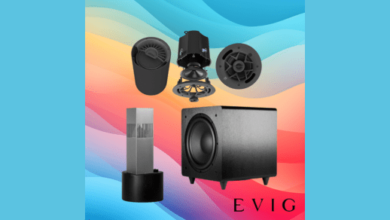
“The Role of Software in the Internet of Things (IoT)” is a crucial aspect of the IoT ecosystem, where software plays a pivotal role in connecting, managing, and enhancing the functionality of IoT devices. Here are 15 key points about the role of software in IoT, along with their respective pros and cons:
The Role of Software in the Internet of Things (IoT):
- Device Connectivity: IoT software enables devices to connect and communicate over the internet.
- Pros: Seamless data transfer, remote control, and increased accessibility.
- Cons: Security vulnerabilities, compatibility challenges, and potential data breaches.
- Data Collection: IoT software collects and aggregates data from connected devices.
- Pros: Data-driven insights, predictive analytics, and improved decision-making.
- Cons: Data privacy concerns, data overload, and potential misuse.
- Data Processing: Processing data from IoT devices to extract valuable information.
- Pros: Real-time analysis, pattern recognition, and actionable insights.
- Cons: Processing complexity, resource consumption, and potential delays.
- Data Storage: Storing IoT-generated data securely and efficiently.
- Pros: Historical data analysis, compliance, and data retrieval.
- Cons: Data storage costs, scalability challenges, and data loss risks.
- Device Management: Software manages and monitors IoT devices’ status and health.
- Pros: Device optimization, troubleshooting, and proactive maintenance.
- Cons: Complex device integration, management overhead, and scalability issues.
- Remote Control: Enabling users to control IoT devices remotely.
- Pros: Convenience, energy savings, and accessibility.
- Cons: Security risks, potential misuse, and latency.
- Firmware Updates: Updating device firmware to fix bugs, add features, or enhance security.
- Pros: Improved device performance, security, and longevity.
- Cons: Update issues, compatibility challenges, and potential failures.
- Security: Implementing security measures to protect IoT devices and data.
- Pros: Data protection, privacy, and secure device interactions.
- Cons: Security vulnerabilities, compliance challenges, and resource overhead.
- Scalability: IoT software should be able to accommodate a growing number of devices.
- Pros: Expanding ecosystem, business growth, and flexibility.
- Cons: Scalability challenges, resource constraints, and performance issues.
- Interoperability: Ensuring compatibility and communication between diverse IoT devices.
- Pros: Cross-device functionality, seamless user experience, and innovation.
- Cons: Technical complexities, integration hurdles, and standardization issues.
- Cloud Computing: IoT software often leverages cloud platforms for scalability and data storage.
- Pros: Data centralization, cost efficiency, and robust computing power.
- Cons: Data privacy concerns, connectivity requirements, and reliance on cloud providers.
- User Interfaces: Developing user-friendly interfaces for IoT device control and data visualization.
- Pros: Enhanced user experience, accessibility, and ease of use.
- Cons: Design complexity, compatibility challenges, and diverse user needs.
- Machine Learning and AI: Utilizing AI for advanced data analysis and decision-making.
- Pros: Predictive analytics, automation, and data insights.
- Cons: Technical expertise, resource requirements, and AI implementation challenges.
- Energy Efficiency: Optimizing software to reduce power consumption in IoT devices.
- Pros: Longer battery life, reduced energy costs, and environmental benefits.
- Cons: Performance trade-offs, development complexity, and power limitations.
- Edge Computing: Processing data at the device (edge) rather than sending it to the cloud.
- Pros: Reduced latency, improved response time, and reduced data transfer.
- Cons: Limited processing capabilities, integration challenges, and resource constraints.
Pros and Cons of Software in IoT:
Pros:
- Seamless Data Transfer: IoT software enables seamless data exchange.
- Data-Driven Insights: Software supports data analysis for insights.
- Real-Time Analysis: Data is processed and analyzed in real time.
- Historical Data Analysis: Storing data allows historical analysis.
- Device Optimization: Software optimizes device performance.
- Convenience: IoT software enables remote device control.
- Improved Device Performance: Firmware updates enhance device performance.
- Data Protection: Security measures protect data and devices.
- Scalability: IoT software can accommodate device growth.
- Cross-Device Functionality: IoT devices interoperate seamlessly.
- Data Centralization: Cloud platforms offer efficient data storage.
- Enhanced User Experience: User interfaces improve usability.
- Predictive Analytics: Machine learning provides data insights.
- Energy Efficiency: Software reduces power consumption.
- Reduced Latency: Edge computing decreases data transfer delays.
Cons:
- Security Vulnerabilities: Software can introduce security risks.
- Data Privacy Concerns: Data collection may raise privacy issues.
- Processing Complexity: Data processing may be resource-intensive.
- Storage Costs: Data storage can be expensive.
- Management Overhead: Device management requires resources.
- Security Risks: Remote control may pose security threats.
- Update Issues: Firmware updates may fail or cause issues.
- Scalability Challenges: Expanding IoT may be complex.
- Technical Complexities: Interoperability can be challenging.
- Data Privacy Concerns: Cloud storage may raise privacy issues.
- Design Complexity: User interfaces require careful design.
- Technical Expertise: AI and ML demand specialized skills.
- Performance Trade-Offs: Energy efficiency may impact performance.
- Limited Processing Capabilities: Edge computing has limitations.
Software is the backbone of the Internet of Things, making it a powerful enabler for innovative and efficient applications. While it offers numerous benefits, including data insights and energy efficiency, it also poses challenges like security concerns and compatibility issues that need to be carefully managed in IoT deployments.





